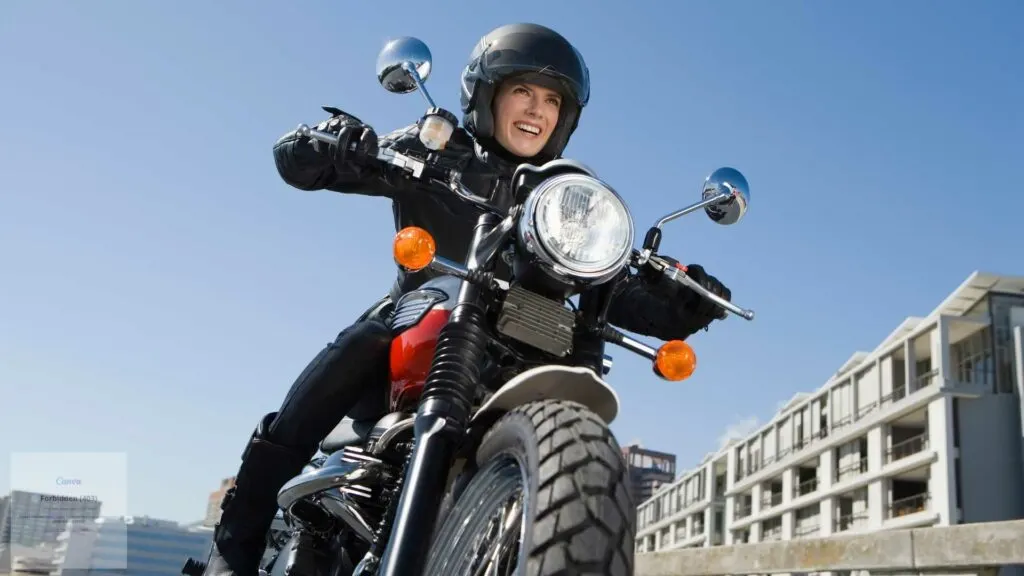Riding a motorcycle alone offers a sense of freedom like no other. The open road, the roar of the engine, and the beautiful scenery create a unique adventure. However, solo motorcycle travel comes with its own set of risks and challenges.
Safety should always be at the forefront of your mind. By taking the right precautions, you can ensure your journey is not only thrilling but also safe. This article provides essential tips to help you stay safe while riding alone.
Whether you are a seasoned rider or a newcomer, these insights will help you prepare for your next solo trip.

1. Let’s Start with Gearing Up for Safety: Your Motorcycle and You
Before you hit the road, it’s crucial to prioritize both your motorcycle’s health and your own.
Be Your Mechanic’s Best Friend: A pre-trip inspection is non-negotiable. Perform a thorough T-CLOCS check (Tire Pressure & Tread, Controls, Lights & Horn, Cables & Chain, Oil & Fluids, Stands) to identify any potential issues. Consider carrying a basic toolkit for minor roadside repairs. If you are unsure about any aspect of your bike’s health, consult a trusted mechanic.
Dress for the Slide, Not the Ride: Protective gear is your best defense in an accident. Invest in a high-quality, DOT-approved helmet, a sturdy leather jacket, armored pants, gloves, and boots. Remember, bright colors or reflective gear enhance your visibility on the road.
2. Planning Your Solo Journey: Route, Communication, and Awareness
A well-planned route, clear communication with loved ones, and heightened awareness are your allies on the open road.
Chart Your Course: Don’t just wing it. Map your route carefully, considering weather conditions, traffic patterns, and rest stops. Research potential hazards like road closures or detours. Sharing your planned route with friends or family allows them to track your progress and offer assistance if needed.
Stay Connected: Pack a reliable GPS device and a fully charged phone. Consider investing in a satellite communicator, especially if venturing into remote areas with limited cell service. Inform loved ones about your estimated arrival times and check in regularly, especially if your plans change.
Ride Defensively: Assume other drivers don’t see you. Maintain a safe following distance, be extra cautious at intersections, and avoid riding in blind spots of larger vehicles. Always use your turn signals and anticipate potential hazards like potholes, gravel patches, or sudden weather changes.
3. Unexpected Encounters: What to Do in Case of a Breakdown or Accident
Being prepared for the unexpected can make a stressful situation slightly less so.
Breakdown Blues: If your motorcycle sputters and stops, stay calm and pull over to a safe location, preferably off the road. Turn on your hazard lights and make yourself visible. If you have basic mechanical skills, attempt a quick fix using your toolkit. Otherwise, utilize your roadside assistance plan or call for help.
The Aftermath of an Accident: If you are seriously injured, seeking legal representation from a motorcycle accident attorney is advisable. In fact, experienced professionals who believe in their capabilities help you get the compensation you deserve. Hence, they clearly state that you don’t have to pay anything unless you win your case. For instance, a motorcycle accident attorney, Stewart J. Guss, has in-depth knowledge of catastrophic injury claims and insurance industry tactics. They will help you go through the legal complexities of an accident and ensure you receive fair compensation for your injuries.
4. Proactive Maintenance: Keeping Your Bike in Top Shape
Even the most meticulous plans can encounter bumps in the road. Here’s how to be prepared.
Pack for the Worst, Hope for the Best: Carry a basic first-aid kit. A roadside assistance plan can be a lifesaver and pack essentials like a multi-tool, flashlight, and reflective vest for emergencies. Consider weather variations and pack accordingly.
Listen to Your Ride: Your motorcycle is a complex machine, and any unusual noises or vibrations could indicate a problem. Pay close attention to how your bike is performing, and pull over for a quick inspection if you sense anything amiss.
Know Your Limits: Riding for hours on end can lead to fatigue, which significantly impairs your judgment. Plan rest stops every two hours or so, and don’t push yourself beyond your physical limits. Remember, the journey is just as important as the destination.
Wrapping It Up
Solo motorcycle travel offers an unparalleled opportunity for self-discovery and connection with the open road. Make sure you ensure your safety through meticulous planning, proper gear, and a keen awareness of your surroundings. With a little preparation and a safety-first mindset, your solo motorcycle adventure can be an unforgettable experience filled with a renewed appreciation for the journey itself. So, gear up, chart your course, and get ready to discover the magic of solo motorcycle travel! Ride safe and enjoy the open road!

Jessi is the creative mind behind The Coffee Mom, a popular blog that combines parenting advice, travel tips, and a love for all things Disney. As a trusted Disney influencer and passionate storyteller, Jessi’s authentic insights and relatable content resonate with readers worldwide.
